Understanding Fat Cells, Structure, Classification, Types and Functions
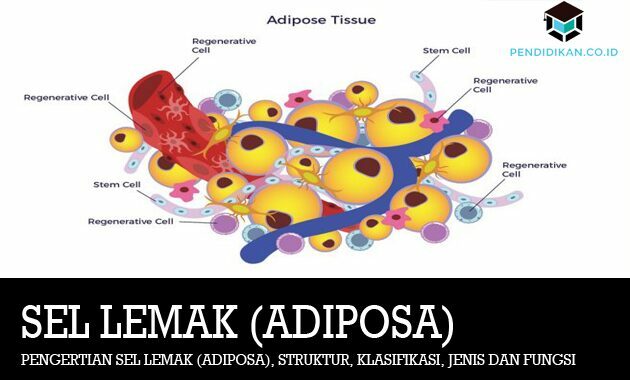
Definition of Fat (Adipose) Cells
Adipose cells are cells that make up fat tissue and have the main function as a place to store fat. This adipose cell is a loose connective tissue that fills the space between the person with inner tissue providing structural and metabolic support. Although these fats are the main component of adipose cells, they are also not the only constituents of these adipose cells. The tissue formed by adipose cells is also called adipose tissue, and this adipose tissue has a responsibility as an endocrine organ that can or can synthesize and secrete several hormone.
Fat Cell Structure (Adipose)
The majority of cells found in adipose tissue are cells that contain a droplet of fat (triglycerides) and cholesterol esters.
Fat drops (triglycerides)
Triglycerides are one of the most common types of fat found in the blood. These triglycerides can be produced by the liver, but for the most part it comes from foods, such as milk, rice, meat, cheese, cooking oil, and butter.
Fat from the food consumed will be broken down and then converted into energy. Any fat that is not used by the body, it will then be converted into triglycerides and stored in fat cells. When needed, the triglycerides are then released to be used as energy.
When the intake of triglycerides from these foods exceeds the amount needed by the body, there will be an increase in triglyceride levels in the blood. High triglycerides are thought to be able or can trigger thickening in the walls of blood vessels, so that it will be at risk of stroke and heart attack.
Cholesterol Esters
Cholesterol is an essential structural component that forms a cell membrane and the external layer of plasma lipoproteins. This cholesterol can be in the form of free cholesterol or a combination of long-chain fatty acids, namely as cholesterol esters. This cholesterol ester is a storage form of cholesterol found in most body tissues. Cholesterol also has an important meaning because it is a precursor to large amounts of cholesterol steroid compounds, such as corticosteroids, sex hormones, bile acids, and vitamin D (Murray et al. 2009).
There are 2 (two) types of cholesterol. Exogenous cholesterol is cholesterol that is found in the diet and is slowly absorbed from the digestive tract into the intestinal lymphatics. Apart from that, there is also cholesterol that is synthesized in the body's cells and is also called endogenous cholesterol (Adam, 2009).
Like most cells in the body, fat cells have a cytoplasm, a cell membrane and a nucleus (cell nucleus). The structure of these cells may or may not swell or shrink depending on the amount of fat stored and used.
Types of Fat Cells (Adipose)
This fat is one of the components of the human body that is very important because it is a hormone-forming and protective organ. In the body, fat is arranged in the form of brown and white tissue. These mammals have two forms of fatty tissue including:
White adipose tissue (White adipose tissue)
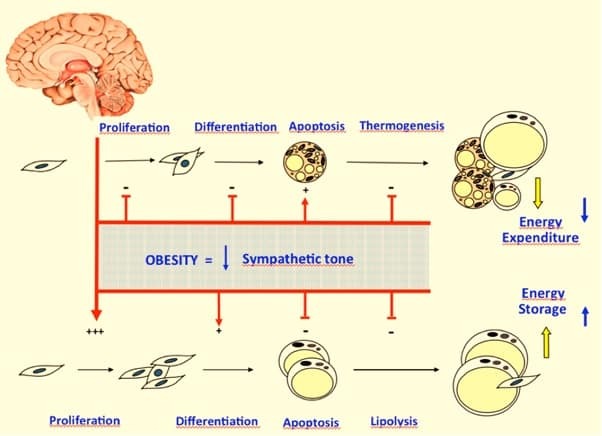
it has a role in energy storage in the form of fat / lipid. These white fat cells have 1 (one) large fat vacuole and a silver-shaped nucleus located on the perimeter. The tissue does not have glycogen and the number of mitochondria is relatively small.
- White adipose is composed of distinctive fat cells called adipocytes.
- These adipocytes contain lipid droplets or liquid fat that fills the cavity in the center of the fat cell and is then embedded by collagen fibers.
Brown adipose tissue (brown adipose tissue)
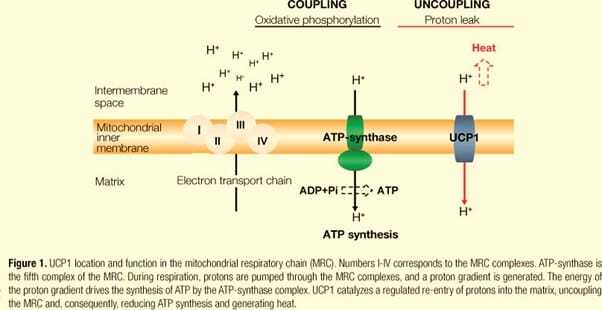
This has a role in energy expenditure because it has an ability to oxidize fatty acids and glucose to maintain body heat. Brown fat cells also have many fat vacuoles that surround the cell nucleus, contain glycogen and contain many mitochondria. The tissue also has a lot of vasculature and nerve cells. The activity of this brown adipose tissue will decrease with age.
- Brown fat cells are smaller than white fat cells.
- These brown fat cells get their brown color from the large number of mitochondrial organelles for energy production.
- The lipids contained in brown fat cells can be burned and used to provide a high level of energy high levels of heat in hibernating animals and babies who may need heat protection additional.
Difference Between White Adipose and Brown Adipose
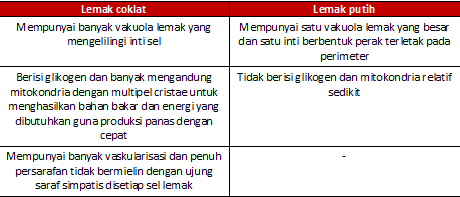
So the body has two types of adipose tissue which of course have opposite roles, namely white adipose tissue (WAT) which has a function to store energy in the form of fat, as well as brown adipose tissue (BAT) which has a function to excrete fat energy. The amount of brown adipose tissue decreases with age, however for the function of the network can or can be optimized by doing sports regularly regular.
Classification of Fat (Adipose) Cells
So based on the constituent components, fat is divided into 3 types, including:
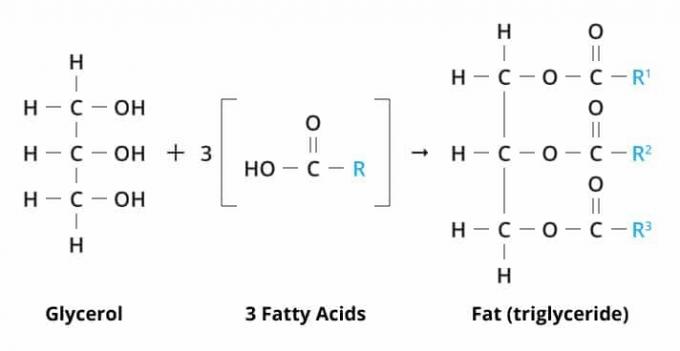
Simple Fat
It is a fat composed of triglycerides, which are three fatty acids and one glycerol. Examples of these fats are waxes and oils.
Mixed Fat
This is a fat consisting of fatty acids and other additional groups (besides fat). Examples are lipoproteins (containing protein) and phospholipids (containing phosphate).
Derivative Fat
This is a fatty compound produced from a lipid hydrolysis process. Examples of cholesterol and fatty acids. Based on the chemical bonds, it is further divided into two of them saturated fatty acids and unsaturated fatty acids.
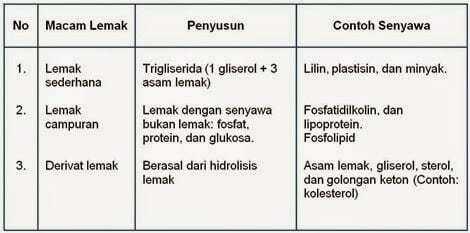
Function of Fat (Adipose) Cells
These fat cells have a role in the process of regulating body temperature.
The adipose tissue also has the function of providing protection from physical injury (ie as a cushion).
Fat cells can or can function as a means of energy storage.
These fat cells can also secrete several hormones.
Fat Cell Distribution (Adipose)
The distribution of a person's fat can or can come in many different shapes and sizes. The term used for people whose fat tends to be distributed to the top is "apple body". Whereas for people whose fat tends to be distributed more to the lower part of the body it is called a "pear body". There are several factors that determine a person's fat distribution, including genetics, diet, exercise patterns, environment, and stress.
Location of Fat Cell (Adipose) Tissue
Adipose tissue is found in various places in the body. Some of them are:
- Subcutaneous layer under the skin
- Around the heart
- posterior eyeball
- around the kidney
- Buttocks
- Thigh
- neural network Jaringan
- spinal cord
- Breast
- abdominal cavity
- Pads around joints
- Upper back, neck,
- shoulders and along the spine (brown fat for adults)
Thus the explanation of the Definition of Fat Cells (Adipose), Structure, Classification, Types and Functions, hopefully what is described can be useful for you. thank you
See AlsoDefinition of Connective Tissue, Characteristics, Function, Location, Components & Types
See AlsoUnderstanding Social Problems
See AlsoUnderstanding, Characteristics and Types of Prose in General
